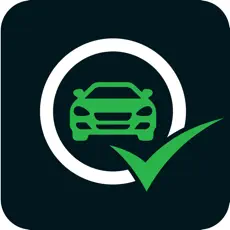If you’re buying a used car, verifying your own vehicle’s records, or checking a car’s accident or title history, you’ll need to locate the Vehicle Identification Number (VIN). This 17-character alphanumeric code is used to uniquely identify any car, truck, SUV, or motorcycle. Before using VINAutoChecker for a free VIN lookup, it’s important to find the VIN correctly on your vehicle.
This guide walks you through exactly where to find the VIN on different vehicle types and why it matters.
What is a VIN and Why It’s Important
A VIN (Vehicle Identification Number) is a standardized code used across the automotive industry to identify individual vehicles. It includes specific details such as the manufacturing plant, model year, engine type, body style, and production sequence.
Locating your VIN correctly is important because it’s the foundation of every vehicle history report. Using the wrong or partial VIN can lead to false records or missing history, which can cost you money or legal trouble, especially when buying or selling a used vehicle.
Where to Find the VIN Number on Your Vehicle
Sedans and Passenger Cars
Most sedans display the VIN in two main places: the dashboard on the driver’s side and the driver-side door jamb. From outside the vehicle, look through the windshield at the base of the dashboard near where it meets the glass. You’ll see a small metal plate or tag with the full 17-digit VIN.
Opening the driver’s door reveals another label, usually stuck to the door frame or the inner part of the door. This label often includes not just the VIN but also tire pressure and manufacturing date information. Some sedans may also display the VIN under the hood or in the trunk near the spare tire compartment.
These areas are ideal to double-check for VIN accuracy and consistency, especially if you’re inspecting a used vehicle.
SUVs (Sport Utility Vehicles)
VIN placement in SUVs follows a similar pattern to sedans. You’ll often find the number on the dashboard, visible from the outside, as well as on the door frame or pillar. Because SUVs may have higher ground clearance, some models also display the VIN inside the engine bay near the firewall or on top of the radiator support.
Manufacturers typically ensure these locations are easy to access without tools, but visibility might vary depending on the size and design of the SUV. When in doubt, your owner’s manual will list all the official VIN locations.
Pickup Trucks
Pickup trucks often include additional or reinforced VIN locations due to their heavy-duty build and potential for structural changes. The dashboard and driver-side door frame are the most common areas, just like in cars and SUVs. However, it’s also common to find the VIN stamped on the frame rail underneath the truck.
This means you might need a flashlight or to get under the truck for a clear view. Trucks used for commercial or towing purposes may also display the VIN near the trailer hitch frame or rear wheel arch. Always inspect more than one location to confirm the VIN hasn’t been altered or replaced.
Motorcycles
On motorcycles, the VIN is usually stamped directly onto the steering neck, which is the area just below the handlebars. Turn the handlebars fully to one side to view it clearly. Some models also feature the VIN on a small plate near the engine or on the lower frame.
Motorcycles also have engine numbers, but these are not the same as the VIN. When using VINAutoChecker or any VIN-based service, only use the vehicle frame number to get the correct information.
What Does a VIN Look Like?
A VIN is a 17-character string that includes both numbers and letters, but never the letters I, O, or Q (to avoid confusion with numbers). Here’s a sample format:
1HGCM82633A123456
Each section of the VIN provides specific information:
- The first three characters identify the vehicle’s manufacturer and country.
- The middle section provides details about the model, body type, and engine.
- The final portion includes the manufacturing plant and unique serial number.
When entering your VIN online, be sure to input it exactly as shown, with no spaces or errors.
Why VIN Accuracy Is Critical
Incorrectly reading or entering a VIN can lead to serious issues. A single wrong digit may pull the wrong report, which could show clean records when the actual car has been in major accidents or has a salvage title. Always confirm the VIN from the physical vehicle itself, not just from the paperwork or previous owner.
For best results, check the VIN from at least two separate locations on the vehicle. This ensures the number hasn’t been tampered with and matches the official records.
After You Find Your VIN: Use VINAutoChecker
Once you’ve found and confirmed your VIN, visit VINAutoChecker.com. Enter the VIN into the search tool and receive a free, full vehicle history report that includes:
- Title and ownership history
- Accident and damage records
- Mileage and odometer checks
- Recall and defect information
- Salvage or rebuild status
The process is simple, fast, and completely free. Whether you’re inspecting a vehicle before buying or just checking the records of your own, it gives you real facts from official databases.
Summary: Know Where to Look
Knowing where your VIN is located is the first step to understanding your vehicle’s background. It also helps protect you from fraud, mismatched titles, and costly surprises. By finding the VIN correctly and using a trusted lookup service like VINAutoChecker, you can make informed decisions based on accurate records.
Before making any purchase or listing your car for sale, take a few minutes to locate your VIN and check the report. It’s a small step that makes a big difference.
